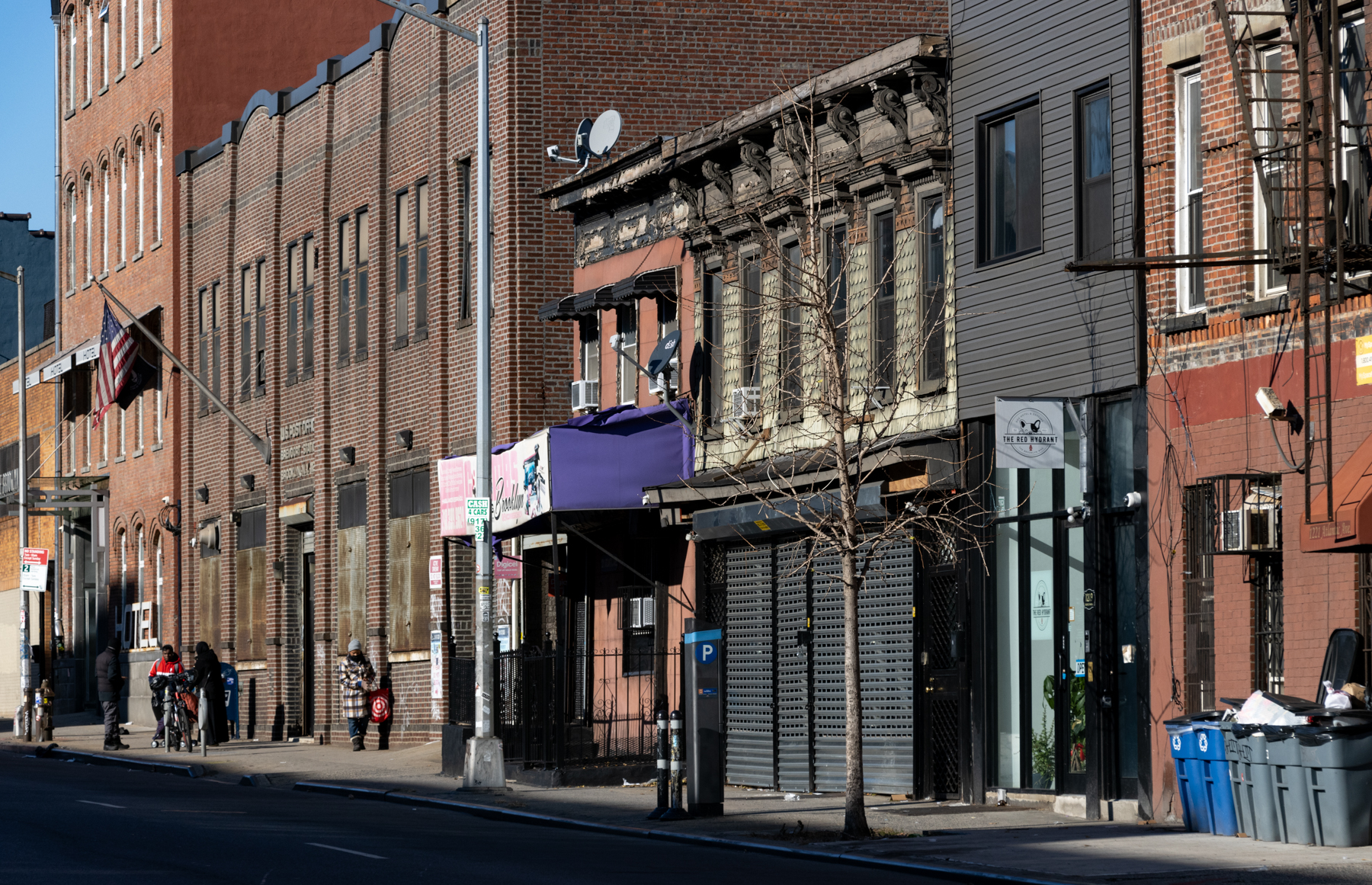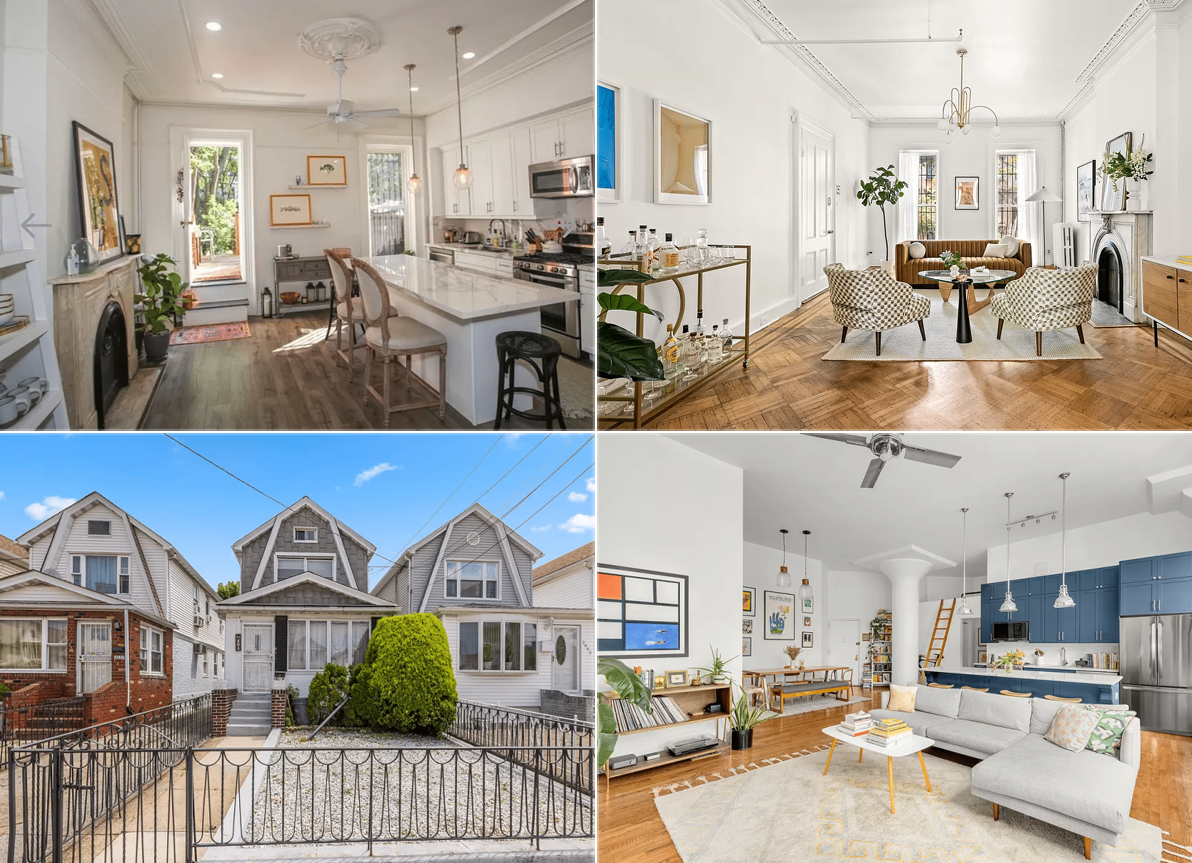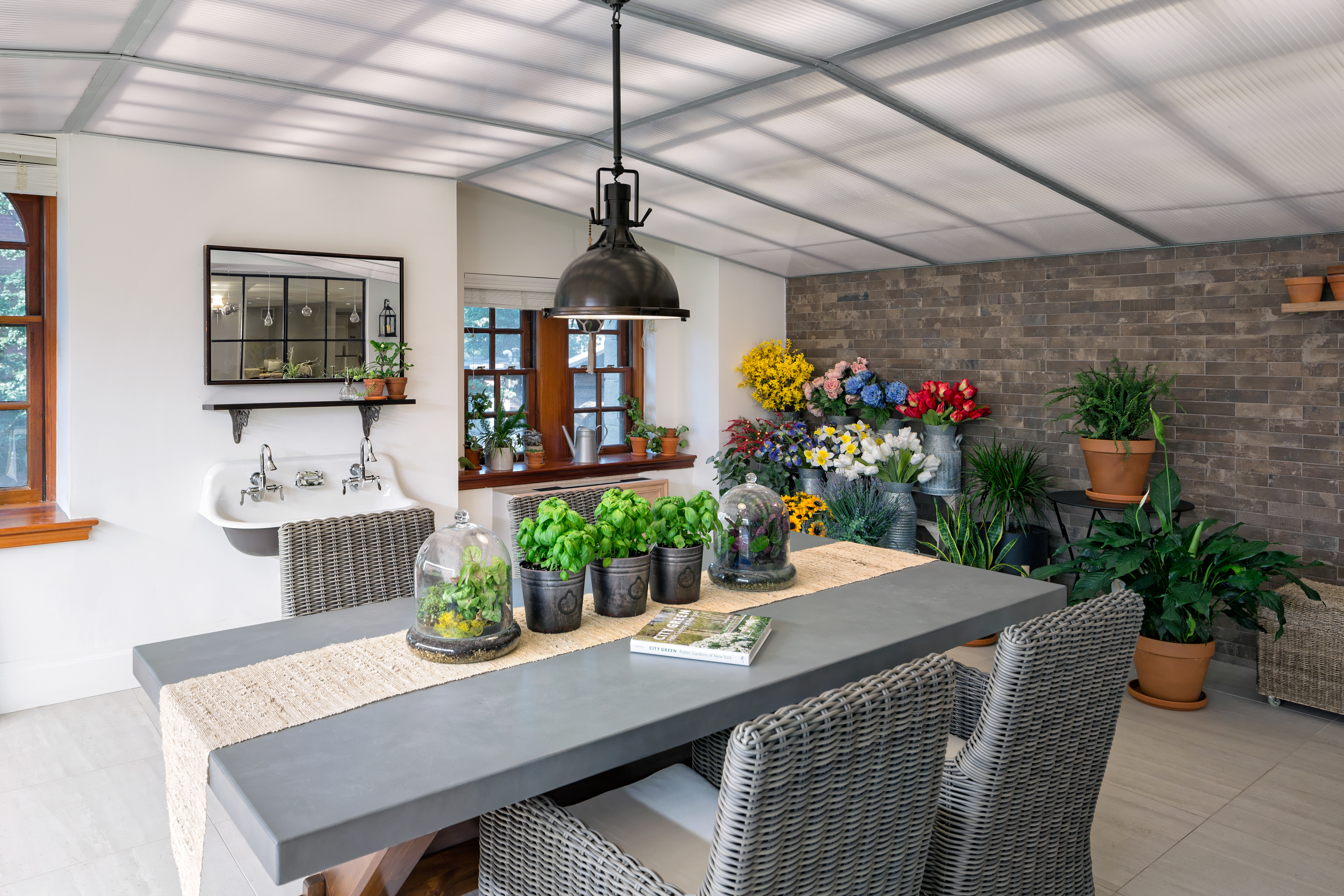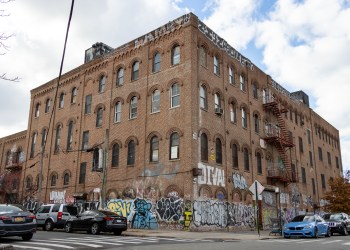A 19th Century Bushwick Home for Brooklyn's Elderly and Indigent
From the 1870s to the 1970s, a complex of red brick buildings in Bushwick provided shelter for the poorest of Brooklyn’s elderly residents.

Editor’s Note: A version of this post was originally published in 2013. You can view the original post here.
From the 1870s to the 1970s, this complex of red brick buildings at 797 Bushwick Avenue provided shelter for the poorest of Brooklyn’s elderly residents.
In 1868, the Brooklyn Eagle announced that a new order of nuns, called the Little Sisters of the Poor, were establishing an order in a building on Dekalb Avenue. The Sisters had originated in France, and were founded in 1841 by a woman named Jean Jugan, who began taking in and caring for poverty stricken old people whom she found begging in the streets of Brittany.

By the 1860s, the order had grown tremendously, and had branches across Europe. The order wished to establish itself in the United States, and in September of 1868, the first group of Sisters, who spoke no English, arrived in Brooklyn.
They soon found charitable support in Brooklyn, and began taking care of the poor and elderly. The order had the support of Bishop Laughlin, the powerful bishop of Brooklyn, so that by 1872, they were able to move from Dekalb into a new facility nearby, at 797 Bushwick Avenue at Chestnut Street. The property would be able to house more than 150 elderly indigent people, as well as the Sisters, who lived in a separate residence nearby.

The complex was designed by A. Wanner, and consisted of a four-story building with a chapel in the center, plus east and west wings for the separate housing of men and women. Each wing had its own dining room, sitting room, offices, and bedrooms for the “inmates,” as they were called. (Inmates did not have the negative connotation it now has.) The men were housed in the east wing, the women in the west.

By 1876, there were 115 women and 76 men living at the home. On March 8, a devastating fire started in the basement of the men’s east wing. The flames quickly rose up the wooden stairway and blocked the only exits. The Sisters were able to get most of the men out, including some who were blind and infirm, but could not reach some of those on the top floor, or save those who jumped from the windows to their death. By the time the fire was put out, 19 bodies had been found, most burned beyond recognition. There were no fire escapes in either wing.

The firemen had been able to save the rest of the buildings, and after the conflagration, the Sisters did what they could to keep going. The 19 men were buried by the Sisters in a large plot they had in the Flatbush Roman Catholic Cemetery. Donations poured in, and they were soon able to rebuild the east wing. A sketch of the configuration of the building, made by the New York Herald, shows what part of the building burned down.
In 1908, the Sisters got another fire scare, when a chimney caught fire and threatened to spread across the roof, but this time, with fire escapes and a plan, they were able to march everyone outside, without a panic. The fire department came and was able to extinguish the fire before it spread or did any other damage.

Over the years since the 1870s, more facilities were added to the original complex, including a new wing added in 1888 by the Parfitt Brothers, and another in 1938 by architect H. Murphy. The home became known as St. Augustine’s Home for the Aged.
In 1970, the Sisters were forced to close St. Augustine’s when new city building requirements passed in the late 1960s made the necessary changes to the home too expensive for them to carry out. The elderly people living there were moved to other facilities, including the Queen of Peace Residence in Queens Village, which was opened by the Little Sisters of the Poor in 1970.

The next year, the Little Sisters of the Poor leased the Bushwick complex to the City of New York for a school. The city bought the property at the end of the lease, paying only $650,000, and the facility became P.S. 386. Today, it is home to a charter high school called the Bushwick Leaders High School for Academic Excellence.
This complex of buildings deserves to be landmarked, as an important social and charitable institution that has contributed to the growth and life of Brooklyn.

[Photos by Susan De Vries unless noted otherwise]
Related Stories
- The Doctor’s Row of Bushwick, Built by a Beer Baron
- This Urban Landscape Was Once a Forest: How Bushwick Got Its Name
- Photos: Meryl Meisler’s 1980s Bushwick — Youth and Freedom Despite the Blight
Email tips@brownstoner.com with further comments, questions or tips. Follow Brownstoner on Twitter and Instagram, and like us on Facebook.









What's Your Take? Leave a Comment